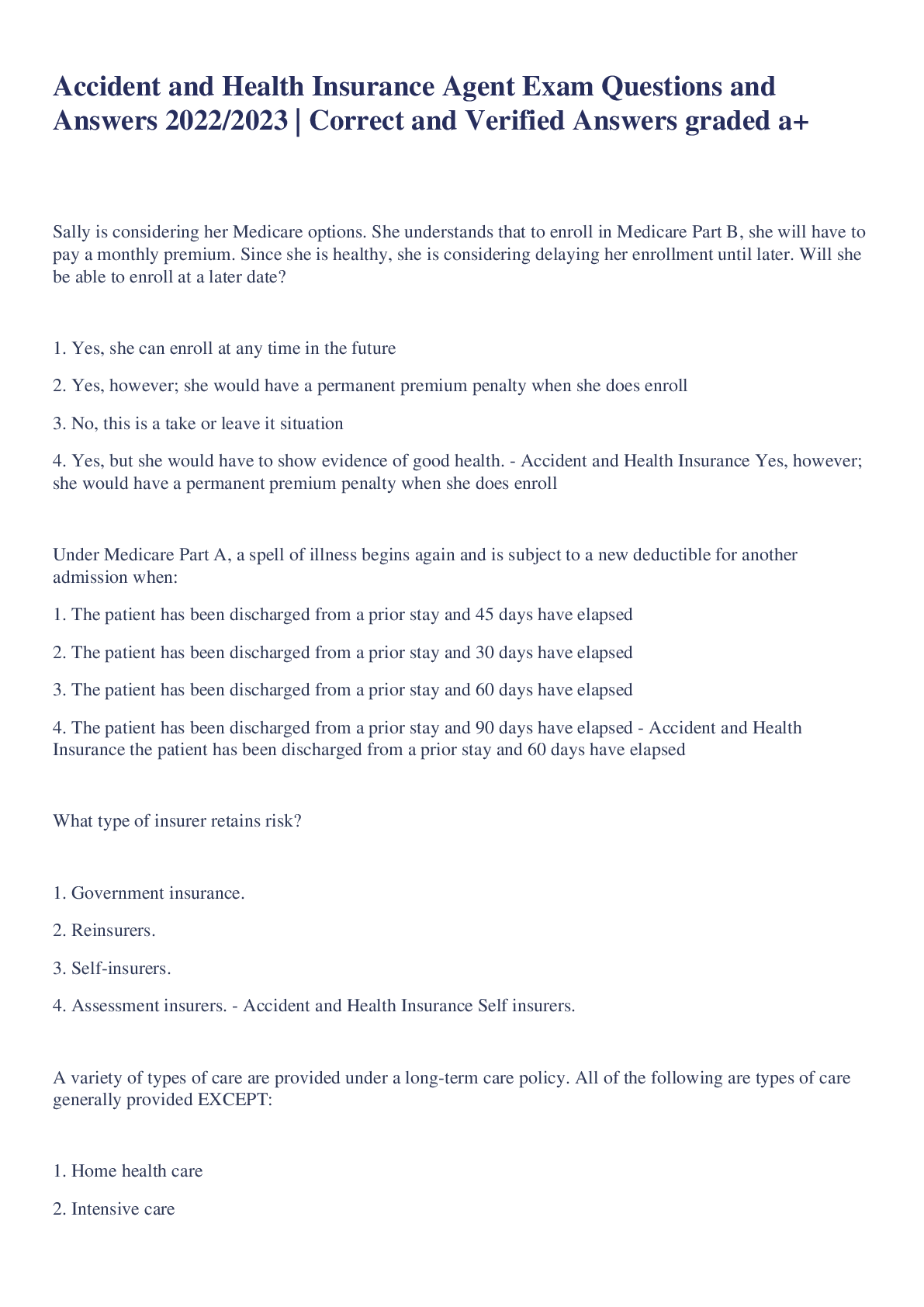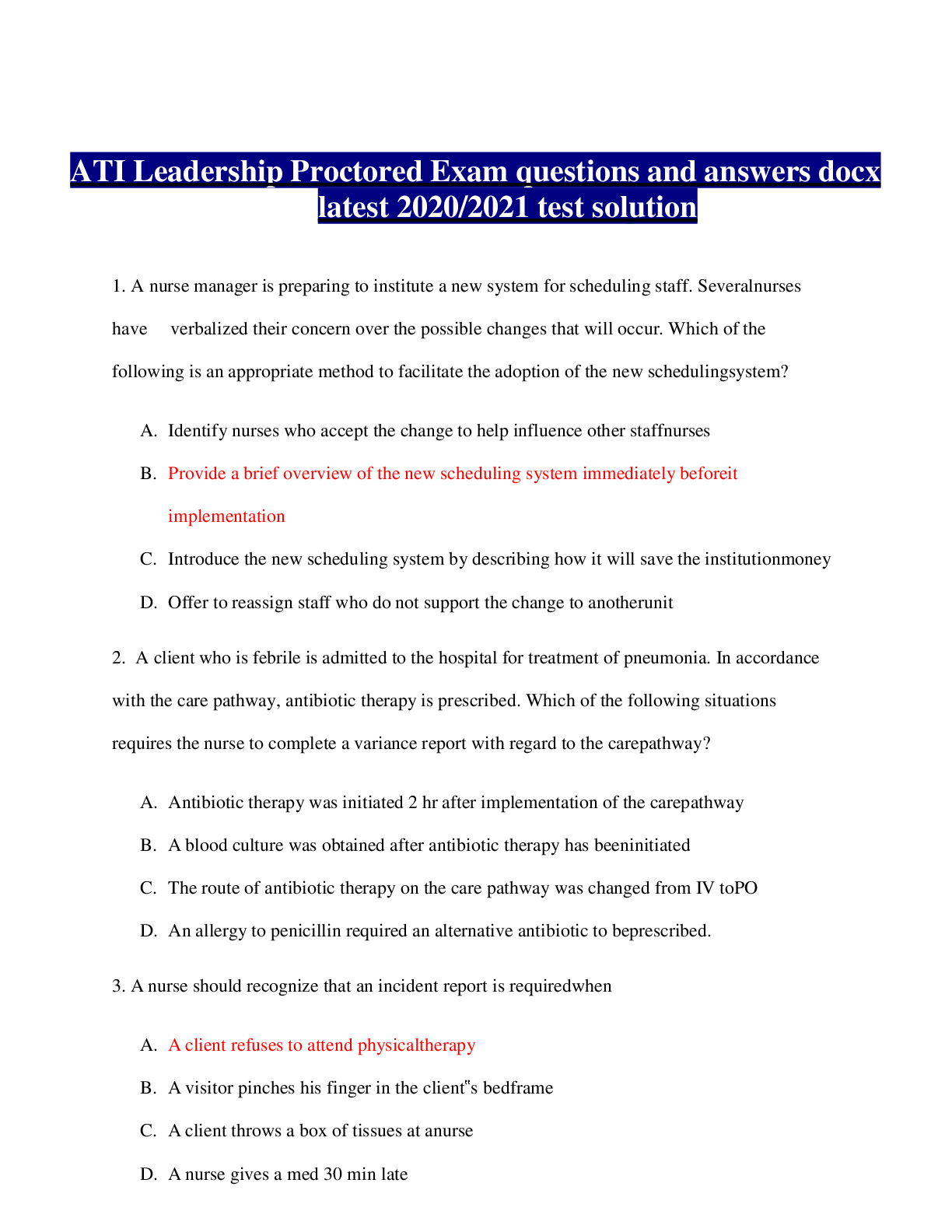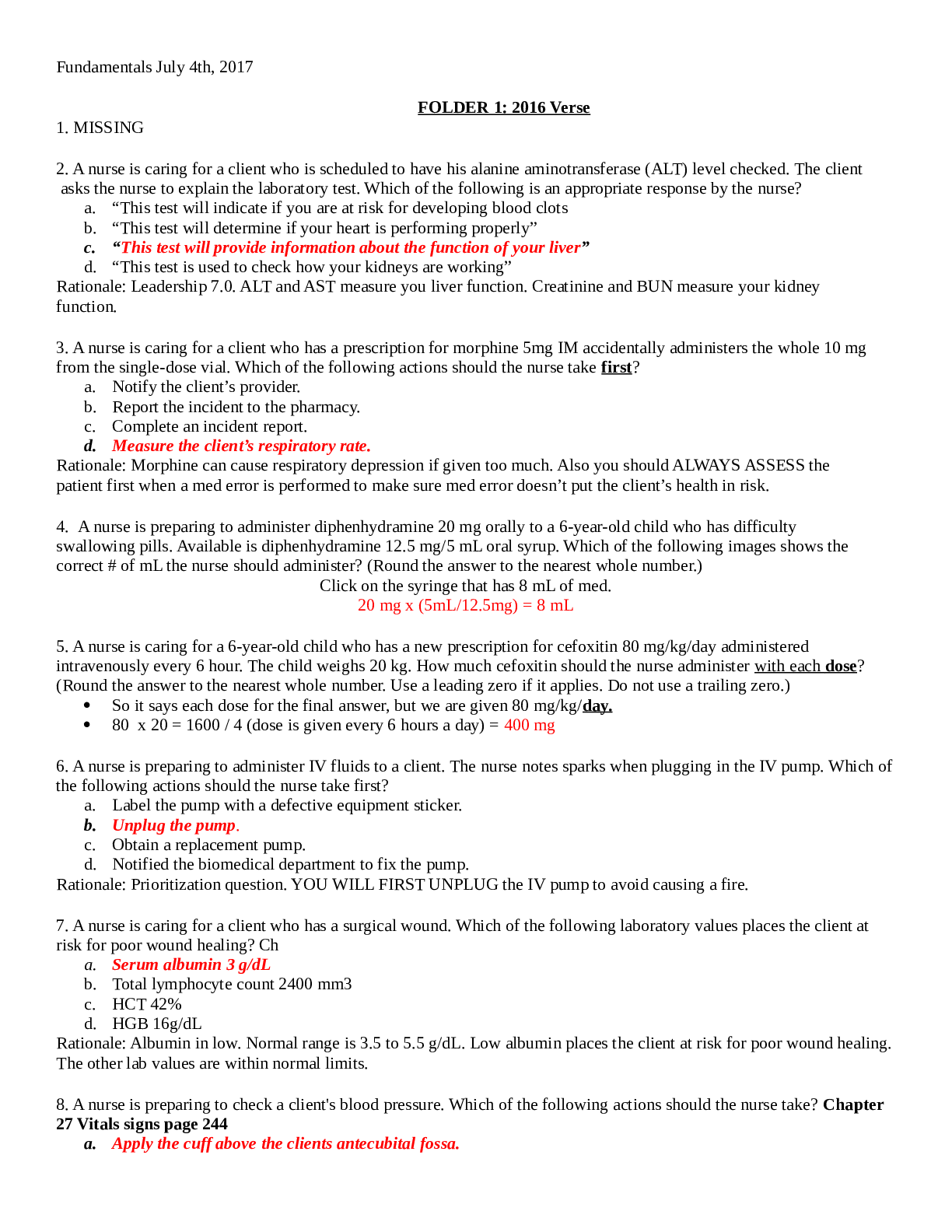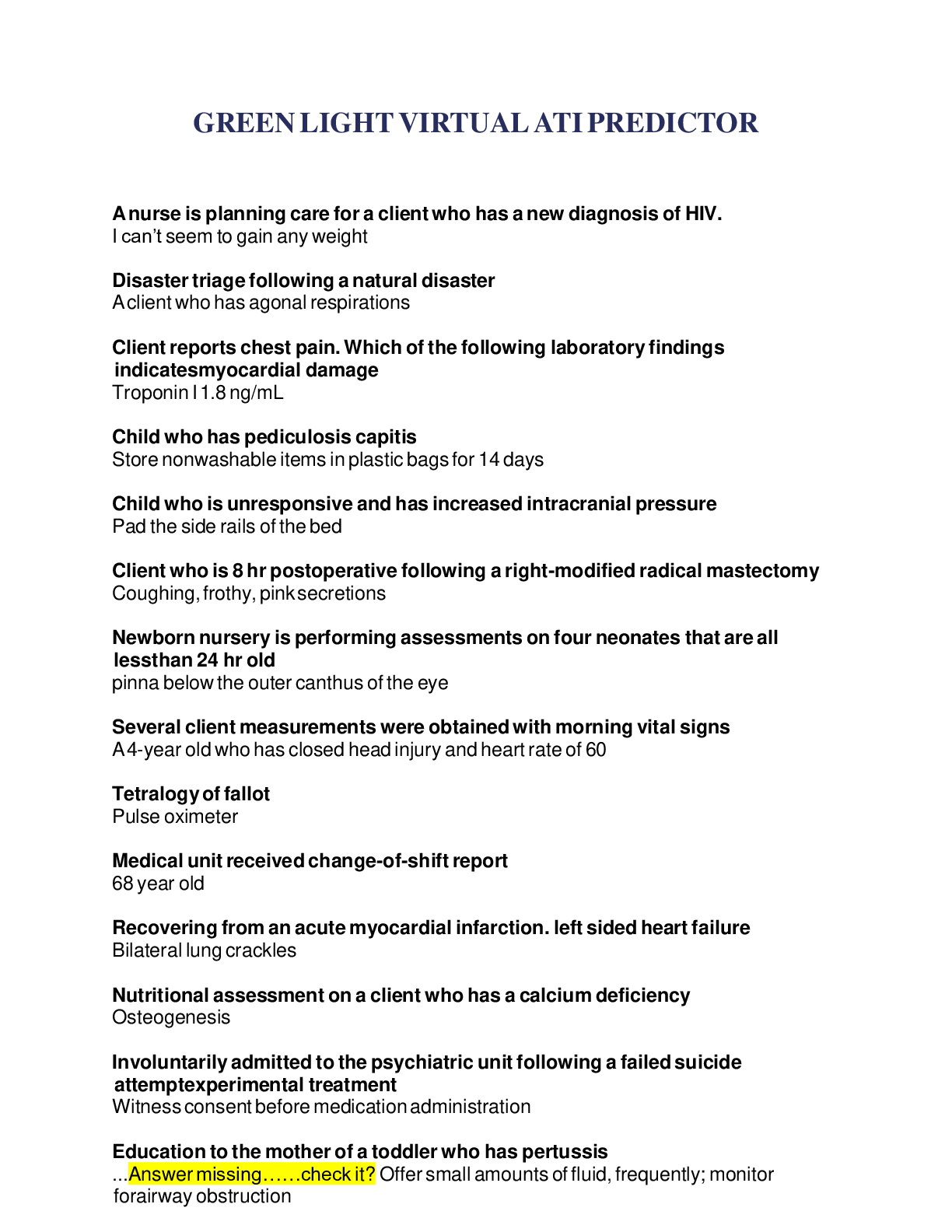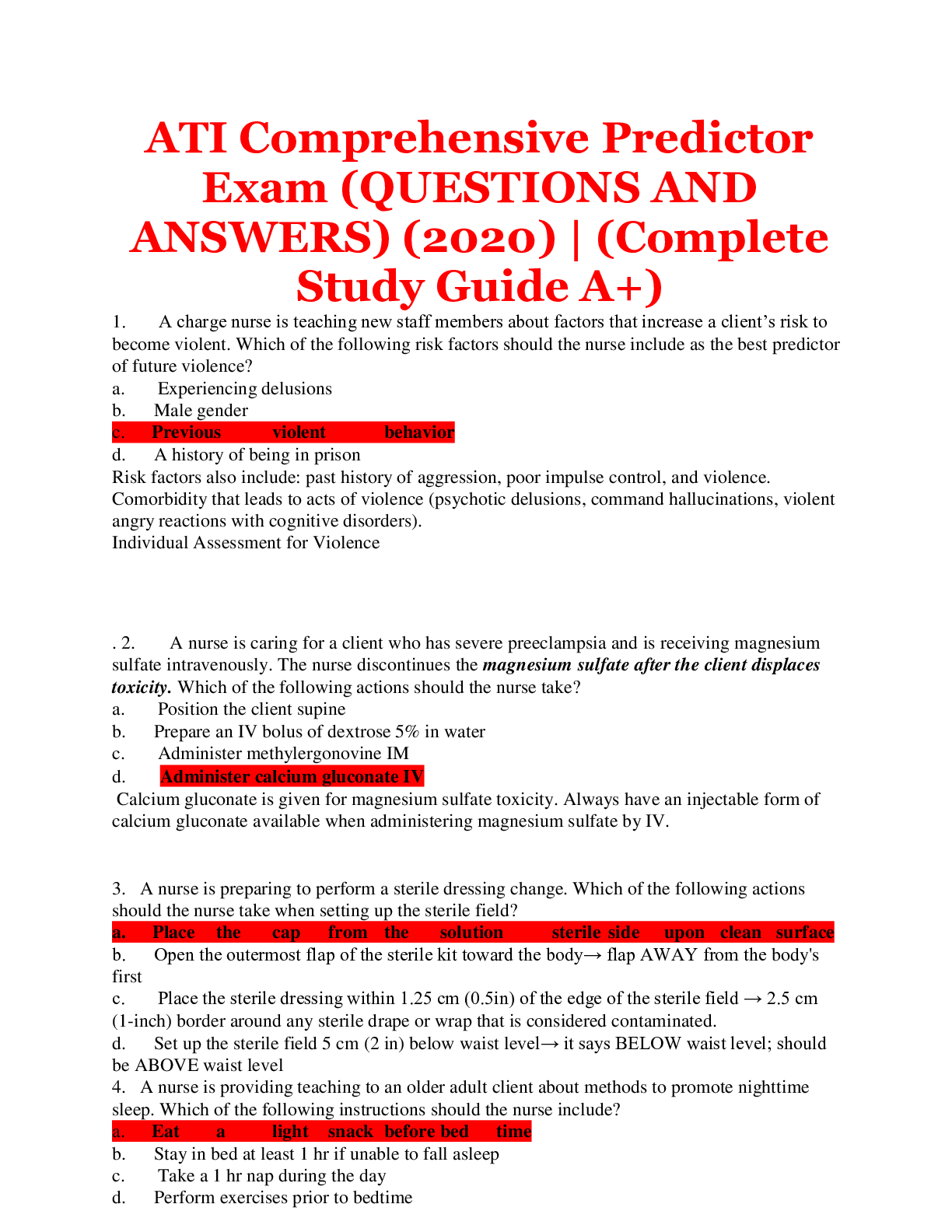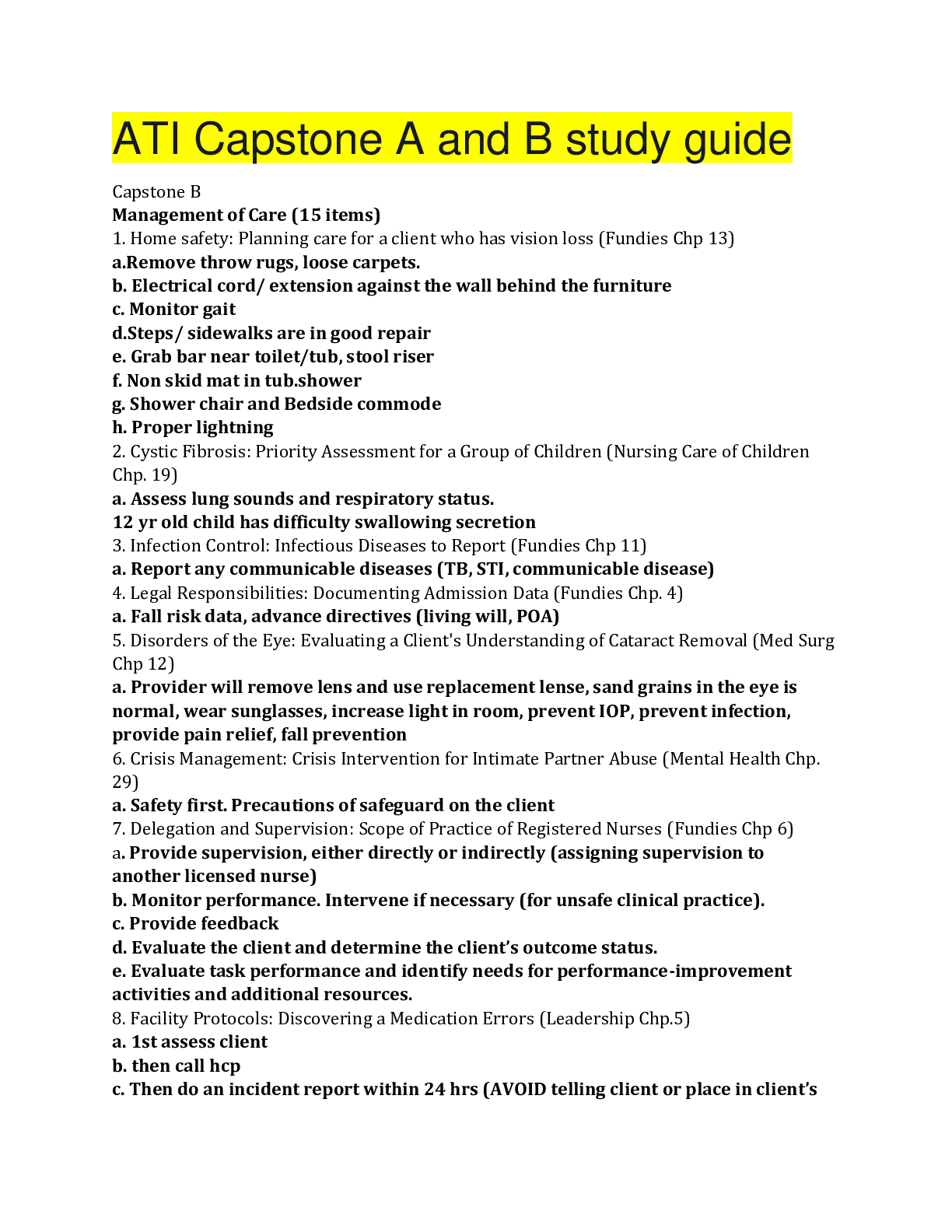healthcare > QUESTIONS and ANSWERS > DEMENTIA CARE – MAKING A DIFFERENCE: WORK BOOK HCA202 - HEALING 2: CARING FOR INDIVIDUALS EXPERIE (All)
DEMENTIA CARE – MAKING A DIFFERENCE: WORK BOOK HCA202 - HEALING 2: CARING FOR INDIVIDUALS EXPERIENCING COGNITIVE CHALLENGES GRADED A+
Document Content and Description Below
Module 1 Understanding Alzheimer’s and Dementia 1. Caring for a loved one suffering from Alzheimer's disease or other dementia is not easy 2. There are ways to provide comfort that can help both ... you and the individual to cope and thrive under the most difficult circumstances 3. Learn ways to help keep yourself healthy so you can create a positive quality of life for both you and your client 4. Dementia is a group of symptoms most often caused by a number of progressive disorders that affect memory, thinking, behavior, and the ability to perform everyday tasks 5. Over time, Alzheimer's disease causes the brain to shrink dramatically, affecting all of its functions and potentially causing changes in personality and relationship 6. As we age, the risk of developing Alzheimer’s disease and other chronic diseases increases 7. The precise cause of dementia is not known; however, multiple factors lead to its development including: A. Advancing age B. Family history C. Cardiovascular diseases D. A history of head trauma 8. The Frontal Lobe is responsible for facial recognition, learned social responses, and long-term memories 9. The Prefrontal Lobe controls emotions, personality, and recognition of long-term memories. 10. The Cerebellum sits at the base of the cerebrum and controls coordination and balance 11. The five common types of dementia include: Alzheimer’s disease, Lewy body, vascular , and frontal tempored and mixed 12. Early symptoms of Alzheimer’s disease include difficulty remembering time, place, or recent event, and depression 13. Lewy Body dementia has a pattern of decline that may be similar to Alzheimer’s disease 14. Vascular dementia results from brain damage caused by multiple strokes 15. Frontotemporal dementia begins inside the forehead area of the brain and has symptoms including changes in personality and behavior, and difficulty with language 16. Increasing evidence indicates that many people have "mixed dementia," which means more than one disorder is present. [Show More]
Last updated: 8 months ago
Preview 1 out of 8 pages
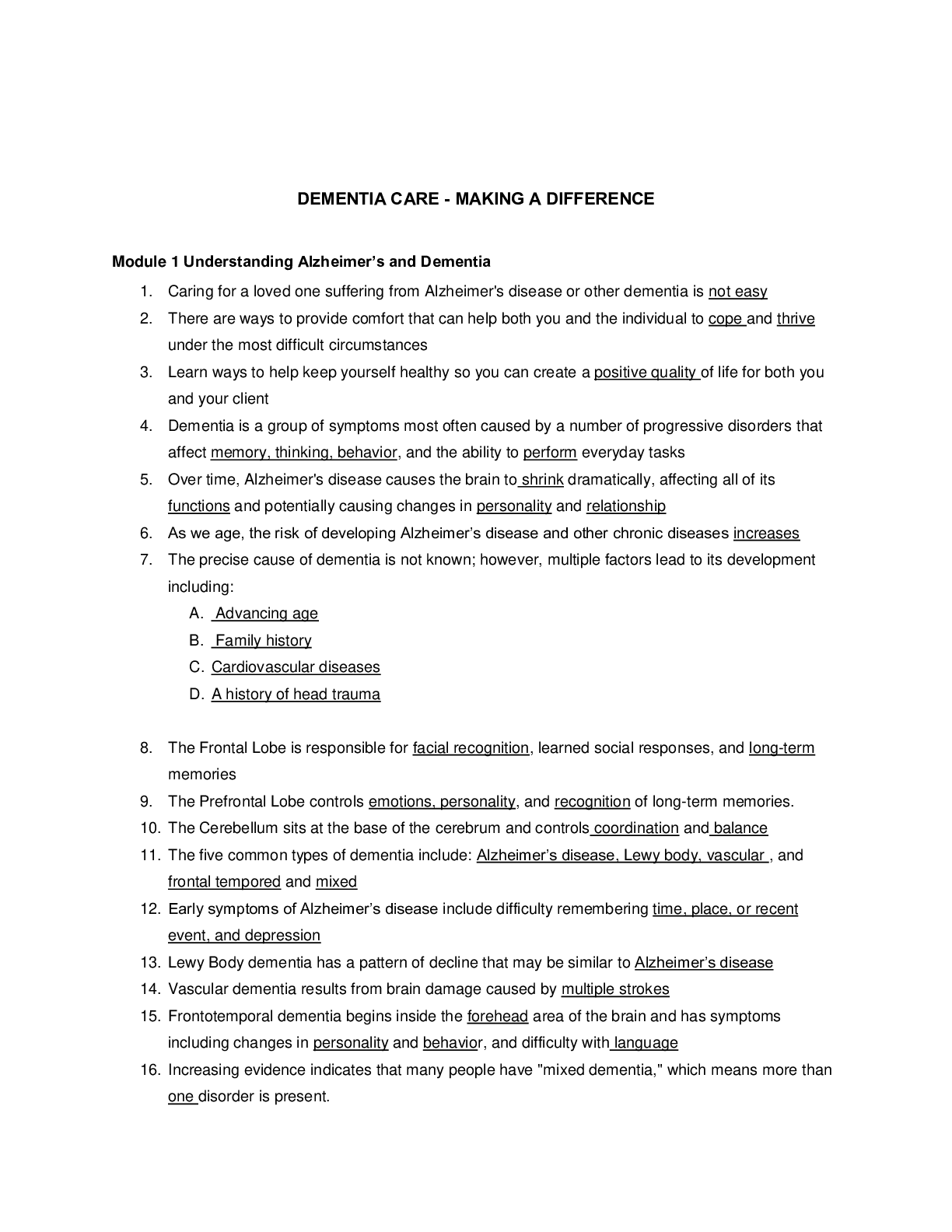
Reviews( 0 )
Document information
Connected school, study & course
About the document
Uploaded On
Aug 21, 2023
Number of pages
8
Written in
Additional information
This document has been written for:
Uploaded
Aug 21, 2023
Downloads
0
Views
30

